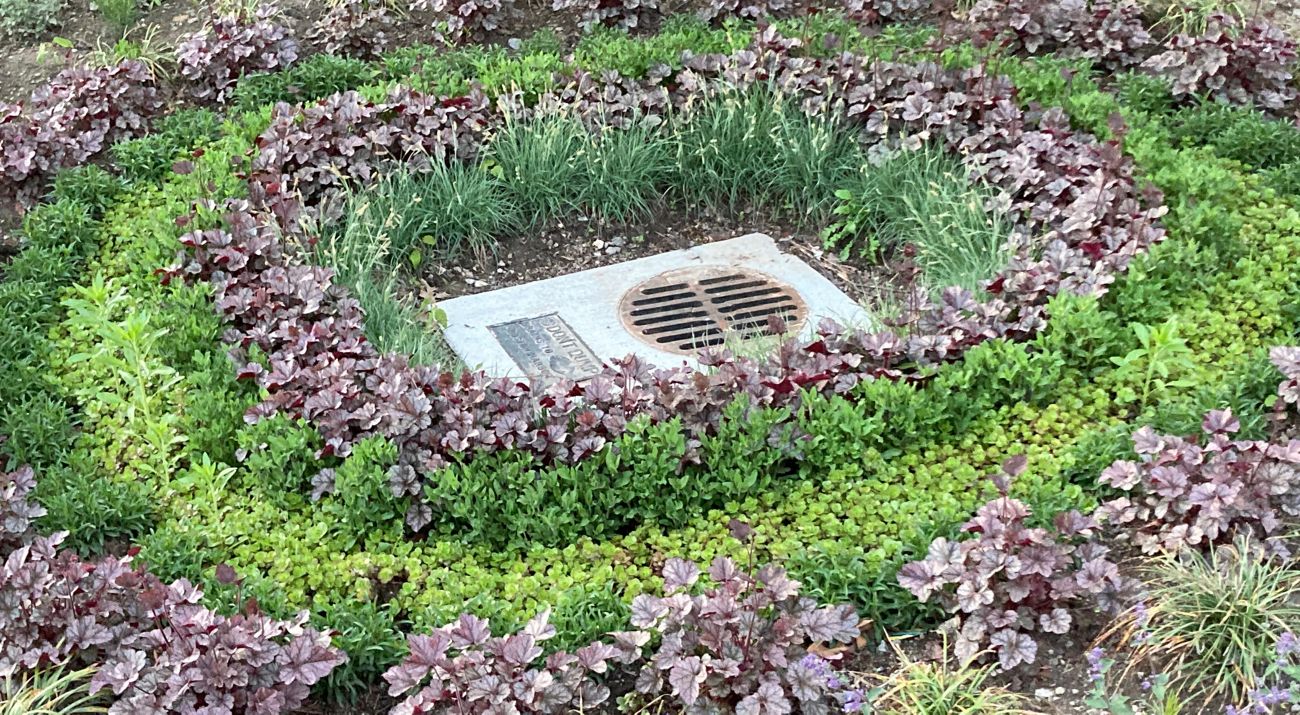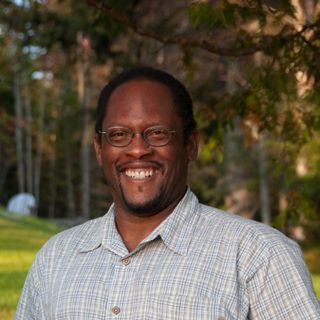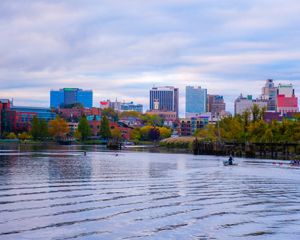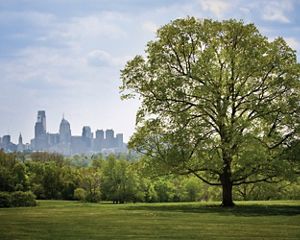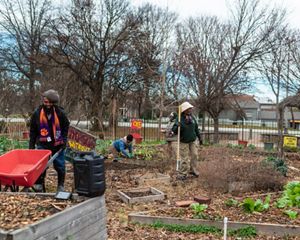Jobs, Conservation and Community Leadership in Boston's Codman Square Neighborhood
Building a workforce for green infrastructure to address environmental, economic and social challenges
David Queeley, Director of Eco-Innovation at Boston’s Codman Square Neighborhood Development Corporation (CSNDC), gestures to his phone and a text he received from a woman who went through the organization's new green infrastructure training program.
The message reads: “Thank you for all your help. Working on this has been the best work in my life, it’s the best work ever. I’ve been asked to come back and they’ve offered me a 20-hour a week position for the summer.”
Feedback like this has been collecting thanks to Queeley's tireless efforts to create a sustainable program to support green jobs in Codman Square.
An Eco-Innovation District
Learn about Codman Square's neighborhood-led sustainability efforts and work with TNC
Read moreCodman Square is in Dorchester, Boston’s biggest and most diverse neighborhood. It has the city’s largest number of people under age 18 and the largest number of immigrants. Like many under-resourced areas in big cities, Codman Square also faces challenges stemming from a changing climate, such as stormwater-caused flooding and potentially deadly urban heat islands (areas that are significantly warmer than surrounding places due to lots of asphalt, sidewalks and buildings, and usually lacking trees or greenspace).
Until recently, what Codman Square didn’t have was a way to help people—especially men of color, individuals impacted by the judicial system, and those without the means to enter the workforce—find jobs that let them work in the community and make it a better place to live.
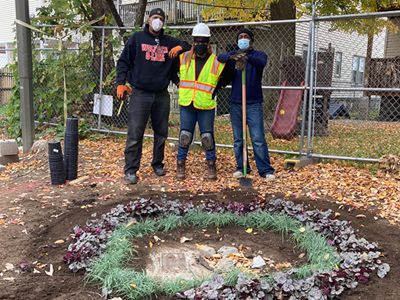
Certification With Purpose
That’s where the Green Infrastructure Training and Certification Program comes in, which was established in 2020 by CSNDC with the support of The Nature Conservancy’s Cities Network Partnership Fund, the JPB Foundation and others. It certifies people in the skills needed to plan, build and maintain rain gardens, pervious pavement, urban tree canopy and green streets and roofs. These tangible projects help reduce stormwater or heat at the source while improving the social, environmental, physical and emotional resilience of a neighborhood’s residents.
“While green infrastructure is a cost-effective way to address a host of issues, in Boston there’s no one city entity responsible for building or maintaining these projects or for hiring people certified to do so,” says Queeley. “There are at least 2,000 public and private green infrastructure projects in the city that need to be inspected and maintained. CSNDC and TNC saw a huge opportunity.”
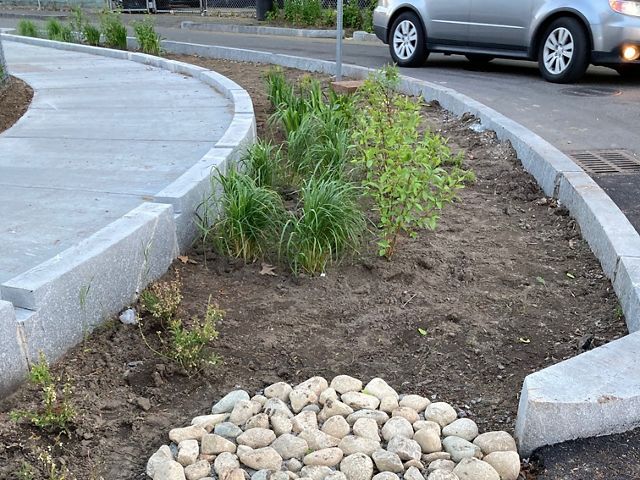
For Queeley and his colleagues at CSNDC, this meant first getting certified to teach green infrastructure skills, then establishing a program to share the knowledge. The first cohort of eight participants met online over the course of three consecutive weekends in 2020. In spring 2021, the second cohort graduated 11 people who participated in 35 hours of class remotely over two weeknights plus one weekend day over the course of 3 weeks. Most of the participants are Black, Indigenous, people of color and/or women; few have related job experience.
After completion of the course, the participants are eligible to take a national certification exam. Five out of the seven people who took the exam after the fall 2020 cohort passed it. Says Queeley: “That’s over a 71% passing rate for people that really didn’t previously know anything about green infrastructure. And that’s a great start.”
Quote: David Queeley
There are at least 2,000 public and private green infrastructure projects in the city that need to be inspected and maintained. CSNDC and TNC saw a huge opportunity.
One member of the first cohort now has a part-time job with the green roof company that built the living rooftops at Fenway Park and Boston Medical Center. Her employer praised her ability to hit the ground running because of her thorough training.
“Wherever I go now, when I see a puddle or I see a build-up of water on the ground, I realize, okay, something needs to be done here. Does it need to be supported somehow or does a catch-basin need to go there with an overflow pipe?” says Juliette Reid, a member of the first cohort. “I look at my environment in a whole different way now.”
TNC’s support allowed CSNDC to offer the classes free of charge. Most of the students could not afford the training otherwise.
Quote: Juliette Reid
Wherever I go now, when I see a puddle or build-up of water on the ground, I realize something needs to be done... I look at my environment in a whole different way now.
Benefits Add Up
“Everyone benefits,” Queeley says. “Any green infrastructure project that lowers the temperature or reduces flooding helps the neighborhood. A bunch of these projects over many neighborhoods or the entire city, worked on by people who live in those communities? Well, that makes things a lot better for a lot of people.”
Other emergent efforts at Codman Square include engaging residents to better advocate for their climate-related concerns through city and state processes and programs. CSNDC is actively seeking collaborators and support to advance this work.
Plans are also in place for trainings in July and November. CSNDC hopes to find a partner to co-develop a business plan and long-term strategy for the green infrastructure training program. They want to reach more employers with whom they could connect program graduates, especially within city departments and at businesses owned by entrepreneurs of color. And they want to determine if there are policy options that would incentivize city contracts going to people with this certification. More people in Codman Square and beyond would gain work experience while also gaining representation within city departments.
CSNDC is currently seeking additional funding to continue the program, cover student exam costs, and support students’ job searches and ability to build career skills.
“We want to be ready with a cadre of people who can do maintenance, inspection and construction, though I think construction of green infrastructure can provide a more consistent living wage,” says Queeley. “Our students know the specifics that make a green infrastructure project successful and that really help solve the problems our communities face. The difference between three versus five inches of mulch sounds small, but could mean a water filtration system that clogs or doesn’t work. Employers value that depth of knowledge.”
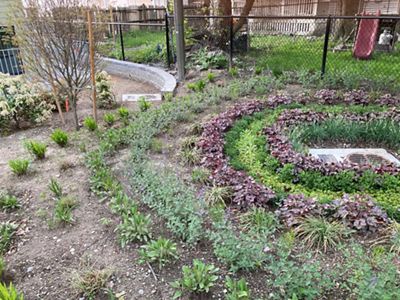
Change Through City-to-City Learning
Other cities have seen success through similar workforce development program models. TNC and CSNDC asked some of those programs to help identify pathways to achieve their goals.
“We looked for ideas that could work in Codman Square, including opportunities for entry-level work and lower barriers to employment, a living wage, improved health and nature-based solutions,” says Leslie Pond, research volunteer at TNC in Massachusetts and one of the co-authors of the Resilient Green Infrastructure and Workforce Development report.
“TNC's collaborations with the Philadelphia Water Department on the city's Green City, Clean Waters Plan, with DC Water’s Clean Rivers Project, and in Atlanta with HABESHA immediately stood out as successes that CSNDC could replicate in Boston,” Pond adds. “These programs show how to institutionalize, and especially how to normalize, the deep, long-lasting, reciprocal relationships that make cities better for everyone who lives there.”
There is great potential in such committed, collaborative approaches.
The state of Massachusetts, for example, recently allocated $12 million per year to workforce development through its Climate Roadmap legislation. The details of where that money goes are in the hands of state agency officials—but ultimately its fate resides in the ability of the community to advocate for a fair distribution of resources and opportunities.
Green infrastructure is an important, yet underutilized, part of the workforce development conversation.
“People can ask for legislation to fund projects that directly result in this kind of job training, which makes their neighborhoods better and thus the city better for all residents,” says Queeley. “They can ask where the money goes and who makes those decisions. They can demand that residents be on those committees and boards. All of us are responsible for making sure that the right voices are in the room when it comes to improving our communities.”
Building Strong Communities
Learn more and and support Codman Square Neighborhood Development Corporation's efforts
Visit Their Website